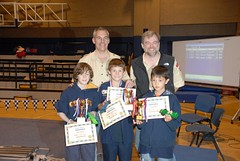Three interesting events linked in my consciousness and have driven me into inspiration. Stay with me while I meander through my thoughts.
Celebrating the Chinese New Year for the 10th time in Asia has caused me to look deeper into this phenomenon with each passing year. The fireworks, the chaos, the calm and the almost surreal intermittent quiet that descends on the city drives one to ponder in more interesting ways about looking both forward and back. The almost constant fireworks for 15 days and the non-stop celebration bring special focus to the year – more so in many ways than the calendar based version of the “western” New Year.

Stay with me now – while listening to the reverberations of crackling explosions, I remembered an episode of Star Trek entitled “The Return of the Archons” — an a often forgotten scene where computer controled minds of a civilization are regularly released for 12 hours allowing a rampant expression of destruction and “celebration” by the population – an escape valve that balances against close control and monitoring. Roddenberry’s depiction of the essence of humanity is played out in this way – under control and conformity of mechanistic intervention “the body dies.” Human spirit – creativity and inspiration – are the key to life.
Follow on this with an email from AISH ala Bambi Betts:
From Peter Drucker, management guru extraordinaire:
“What is the manager’s job? It is to direct the resources and the efforts of the business toward opportunities for economically significant results. This sounds trite — and it is. But every analysis of actual allocation of resources and efforts in business that I have ever seen or made showed clearly that the bulk of time, work, attention, and money first goes to problems rather than to opportunities, and, secondly, to areas where even extraordinarily successful performance will have minimal impact on results.”
More accurately, the allocation of resources might be described as going to the status quo in yet another attempt to maintain equilibrium. Deviation from conformity drives us all to naturally steer the offender back on course through layers of bureaucracy and the subtleties of long standing paradigms. These limiters provide a powerful lid to exactly the innovation and powerful deviations that are most needed in an age of economic meltdown and global disaster on our very doorstep.
So what does Noah’s Ark have to do with this. My guess is we are all looking to a higher power in a time of fearful contemplation. I am not really suggesting a religious theme of Armageddon here. In the midst of the above musings, I settled in to watch a humorous film (Evan Almighty) on a modern day Noah and his Ark. The character playing God (Morgan Freeman) in this popular movie posed some particularly thoughtful questions part way through the drama.
“Let me ask you something. If someone prays for patience, you think God gives them patience? Or does he give them the opportunity to be patient? If he prayed for courage, does God give him courage, or does he give him opportunities to be courageous? If someone prayed for the family to be closer, do you think God zaps them with warm fuzzy feelings, or does he give them opportunities to love each other?”
“How do we change the world?”
“One single Act of Random Kindness at a time. (ARK)”
So how does this connect, you ask? The theme here is ultimately about breaking down the barriers of conformity. It’s about letting creativity and its random spirit spur us to create that which is not yet conceivable. The human spirit is about randomness. Chaos theory reigns supreme when you want to accomplish something beyond the status quo – and this is most certainly true when many fearfully cling to a narrow view of what is right, acceptable, and sustainable.
A complex world with difficult problems requires significant out of the box thinking. Are we ready to initiate the “Red Hour” to solve them in the most creative way possible?

